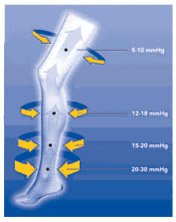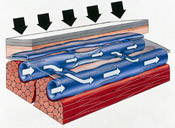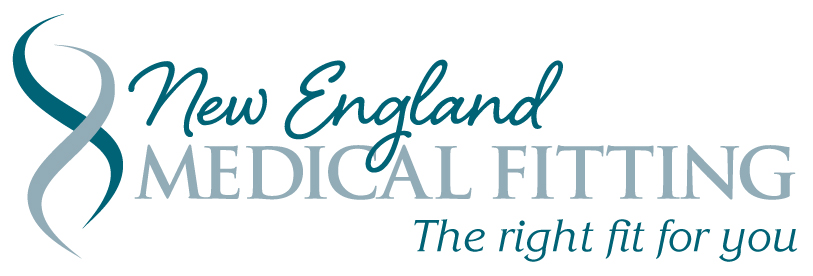
Help Yourself
Three easy actions can help you maintain the health of your leg veins:
- 1. Exercise
- 2. Elevation
- 3. Wearing gradient compression stockings
Compression therapy alone is not enough. Exercise and periods of leg elevation are also necessary for effective management of edema, venous disease, and lymphatic disease.
Regular walking, swimming or cycling works the calf and thigh muscles. Contraction of these muscles helps the return of venous blood from the legs back to the heart.
Checklist:
- Elevate your feet above the level of your heart whenever possible.
- Draw letters of the alphabet with your toes once each hour when sitting for extended time.
- Avoid long periods of standing or sitting.
- Avoid crossing your legs, wearing high-heeled shoes or tight-fitting clothes.
- Lose excess weight.

Gradient Compression
Gradient compression delivers a squeezing to the leg that is tightest at the ankle. The degree of squeezing or compression gradually decreases up the leg. This compression, generally expressed in mmHg (millimeters of mercury) provides two main benefits.

A complete understanding of precisely how compression works remains unknown. Two actions are generally accepted. Probably the most beneficial effects of compression are it's effects on the capillaries and tissue spaces.
Compression is believed to increase the pressure in the tissues beneath the skin thus reducing excess leakage of fluid from the capillaries and increasing absorption of tissue fluid by the capillaries and lymphatic vessels. Compression therefore reduces and helps prevent swelling.
The physical presence of the stocking also helps control the size (diameter) of superficial veins beneath the stocking. The stocking does not allow these superficial veins to over expand with blood. This action helps prevent "pooling." The venous blood then flows more quickly up the leg towards the heart.

Medical Links
American Venous Forum
http://americanvenousforum.com/ →
The AVF is an international consortium of venous and lymphatic specialists dedicated to improving patient care through education and information exchange.
American College of Phlebology
The ACP works to provide education related to venous disorders, such as the management of varicose veins, and strives to improve the standards of patient care.
National Lymphedema Network
Founded in 1988 the NLN is a non-profit organization dedicated to providing education and support to lymphedema patients and their families, and health care providers.
JOBST Vascular Institute
Interdisciplinary Team Focus on the Treatment and Prevention of Vascular Disease. Through active clinical research and practice, the JOBST Vascular Institute is among the world leaders in Vascular Surgery.





